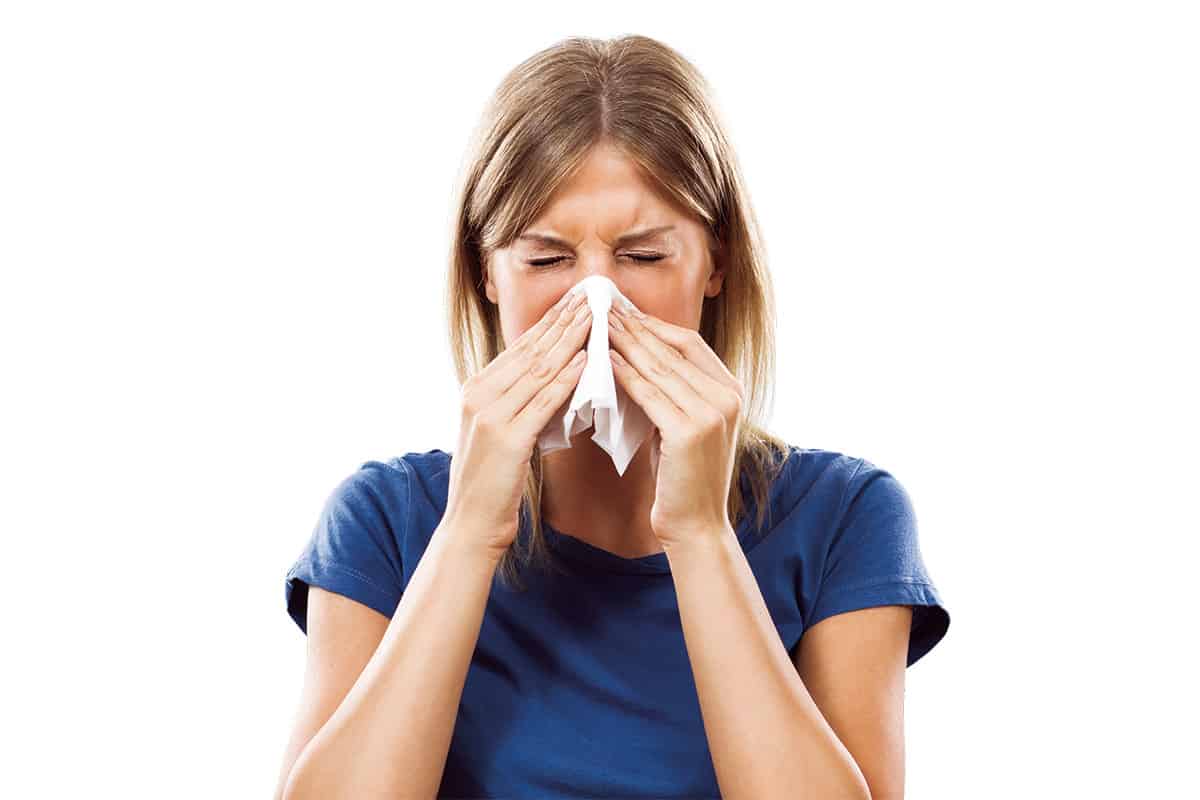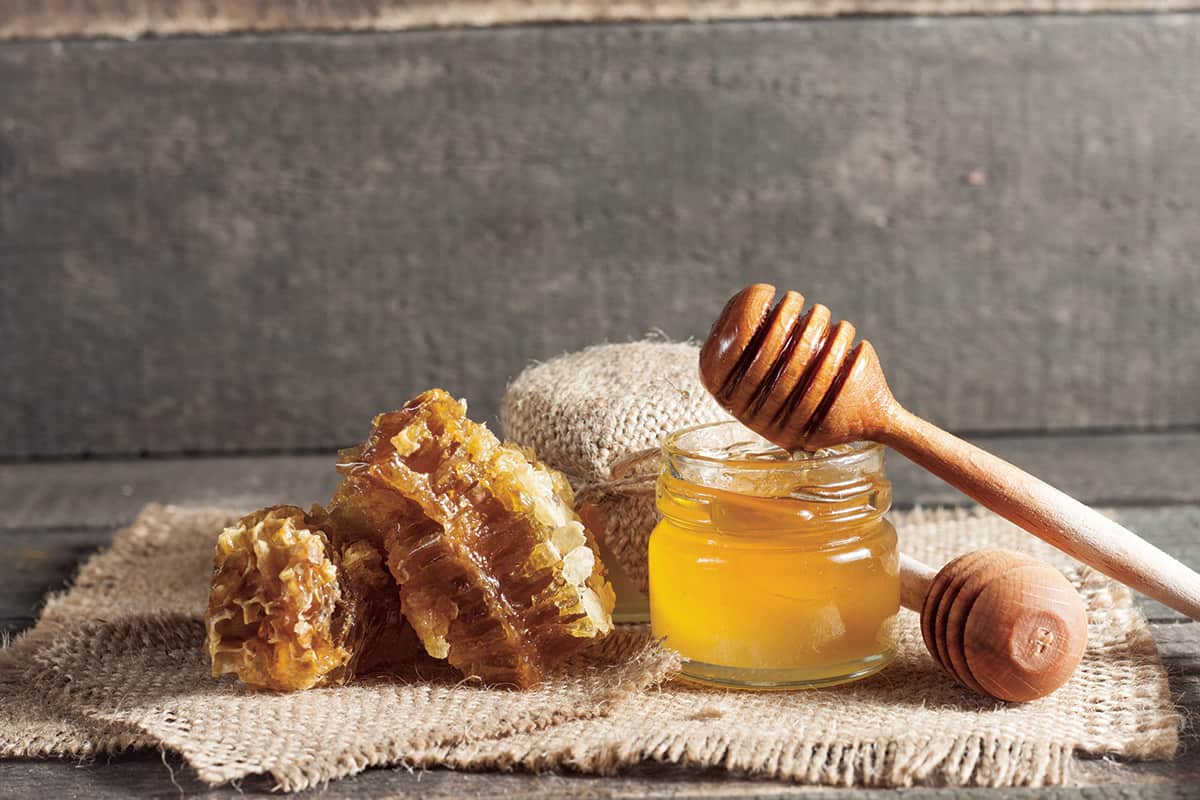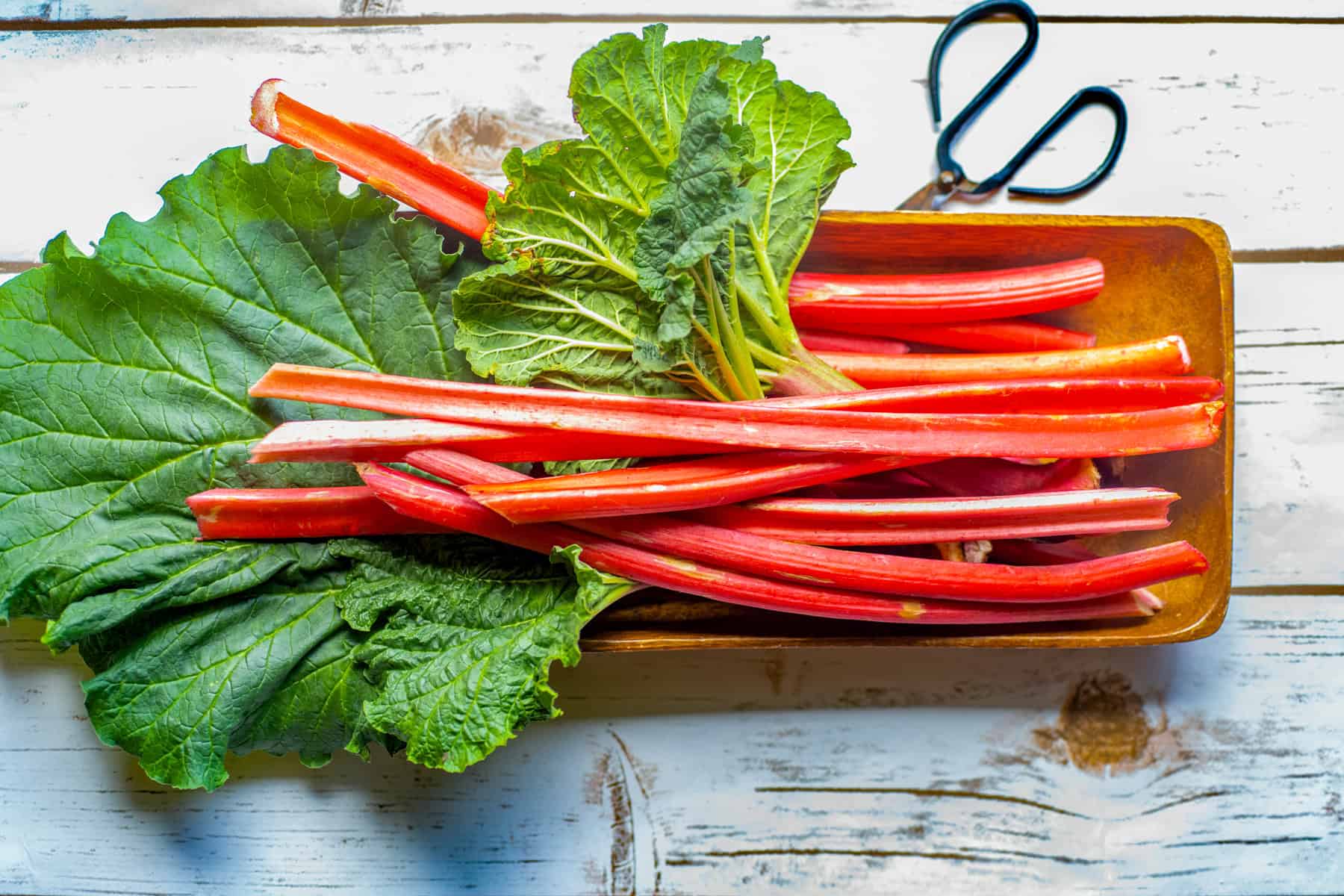By Kate Hull Heidenreich
–
Every spring, our immune system gets ready for battle—standing guard against allergens and waiting to defend our bodies at all costs. These irritants come in different types of sneaky disguises that are harmless to some, but unwelcomed to nearly 26 million Americans. Some are seasonal, like spring and summertime pollens, and others are daily encounters, like dust, pet dander, and foods.
To sufferers, the symptoms are all too familiar: red, itchy eyes; a puffy, runny nose; and countless sneezing attacks—the immune system’s way of trying to rid the body of pesky intruders. All we can do is attempt to alleviate the annoyance. But how?
Over-the-counter or prescription medicines can reduce symptoms, but sometimes the results, or lack thereof, are as frustrating as the symptoms themselves. In fact, according to a report by the American College of Allergy, Asthma, and Immunology, one third of allergy sufferers reported that their prescriptions just don’t work.
Cue natural remedies, such as: Ayurveda, acupuncture, Nambudripad’s Allergy Elimination Technique (NAET), and a change in nutrition. Scoff you may, but many have nixed pills and sprays for a more holistic approach that, for them, has provided a welcomed solution.
As a lifelong seasonal sneezer myself, I took a deep dive into the world of alternative allergy treatments to see what other sufferers swear by, in the hopes of saying “sayonara” to another sniffy and snotty season.
The Freak Out
An allergen is typically a non-toxic substance, like pollen, that causes an inappropriate response by your immune system. And while some experience only mild discomfort, others deal with debilitating symptoms that affect everyday life (it sucks when wildflowers become your worst enemy).
If you’ve noticed your allergies seem to have worsened and/or are starting earlier, you aren’t imaging things. Quest Diagnostics, a clinical laboratory and diagnostic information company, conducted the largest study of allergy patients in the United States to date, titled “Allergies Across America” (2011). The four-year study looked at over 2 million patients, from newborns to those 70 years of age, who were tested by Quest Diagnostics from 2005 to 2008. Their findings showed that the number of allergy patients increased by 19 percent over the four-year period, while the overall sensitization rate grew by 5.8 percent, proving that allergy season is getting longer, and affecting more and more people.
The increased span of seasonal allergies could be an indicator of the global warming hypothesis. Science shows that as the earth gets warmer, pollen stays around longer. And, according to the National Center for Environmental Information, 2015 was the warmest year to date.
Getting to the Root
Okay fellow sufferers, while it’s not what we want to hear, there is no instant fix to your pollen-induced symptoms. Daily pills, like Zyrtec and Claritin, may suppress them, but alternative practices go for the root cause, and begin by examining your lifestyle.
“From the perspective of Ayurveda, there is no magic pill; it is more about learning how to live it in relationship to your own unique constitution and the environment you are in,” says Suzanne Leusch, a clinical Ayurveda specialist based in Driggs.
This 3,000-year-old holistic approach looks at the balance between the five elements—ether, air, fire, water, and earth—and the three doshas, or constitutions, that relate back to the elements: vata (air and ether), pitta (fire and water), and kapha (earth and water). If one of these doshas is out of balance, your body will react. Earth and water are cold, heavy, dense, and stable. Therefore, excess kapha results in congestion, sneezing, and post-nasal drip—all common symptoms of allergies. To combat this, Ayurvedic practitioners believe in restoring your body’s balance in relationship to the most dominant dosha that presents through diet and herbs.
For an allergy sufferer, Leusch would first look at their digestion. In Ayurveda, digestive fire is referred to as agni. When agni is strong, the body can properly take in food, extract what is needed, and discard what is not. From an Ayurvedic perspective, poor digestion, or the inability to eliminate waste, weakens the immune system and the ability to respond to stress. Enter a runny nose or itchy eyes.
“If a person’s ability to eliminate waste is compromised, they are unable to counter the perceived threat, which is pollen,” says Leusch.
Leusch recommends examining your symptoms. Are you feeling dried out? Irrigate your sinuses with a Neti Pot salt-water flush, then cleanse or lubricate your nasal passages with oil. Overly runny nose? Gargle with a mix of turmeric and salt in warm water or oil to pull out the mucus.
Katie Ziem, an Ayurveda health practitioner based in Jackson, echoes the importance of balance. She encourages allergy sufferers to clean out both their internal and external environment for preventative measures: use hypoallergenic pillows, a vacuum with a high-efficiency particulate air (HEPA) filter, and natural cleaning products like vinegar.
For symptomatic relief, Ziem recommends using honey for its antibacterial and anti-inflammatory properties. And drink tea with herbs, like turmeric, to boost your immune system. “You should be doing this year-round for the most effective lifestyle,” she says.
The Belly of the Beast
Similarly, Lorrie Lee-Wells, a nutrition practitioner at All Is Well Nutritional Therapy in Jackson, encourages people with seasonal allergies to examine their gut integrity. “If you have environmental allergies [like pollen sensitivities], you may also have hidden food allergies that are preventing your body from handling the environment to the best of its ability,” she says.
And while this may not be everyone’s deal, it’s a good place to start. Lee-Wells encourages patients to start with a food journal. “They may not see a direct [reaction] right away. Maybe a bagel on Monday gives you a headache on Wednesday,” she says. “Track what you are feeling and see if you can figure out what causes the symptoms.”Even if our diets aren’t causing seasonal reactions, eating nutritious foods with enough daily vitamins and minerals is directly linked to immune system health.
Reversing the Reaction
Esther Jacoby, a mother and the owner of Barrels & Bins Community Market in Driggs, began her quest for alternative treatments in her early twenties, after a stint of adult-onset allergies left her relying on Zyrtec. Insight from friends and family led her to explore NAET, Nambudripad’s Allergy Elimination Technique. “I had family members who had personally benefited from NAET allergy treatments, so I decided to check it out,” Jacoby says. “I was allergic to all sorts of random things and slowly tackled each allergy one treatment at a time.”
A relatively young technique developed by Dr. Devi S. Nambudripad in 1983, this non-invasive, drug-free way of combatting allergies has some pretty firm believers. NAET utilizes a blend of selective energy balancing techniques, Neuromuscular sensitivity testing, and chiropractic and acupuncture disciplines to treat allergens one at a time.
Lori Lloyd, acupuncture and Chinese Medicine practitioner at Elements of Health in Driggs, includes Nambudripad’s Allergy Elimination Technique as one of her specialties. “An important component of NAET is the need for advance treatment before allergy season hits,” Lloyd explains. “In the heart of the season, it can be difficult to treat.”
So, how does it work?
An allergen initiates an energy disturbance in the weakest part of the body, creating an energy block in the corresponding acupuncture meridian. This blockage then generates a sensitivity toward the given substance. NAET rebalances the energies in the body and desensitizes the response to the allergen by clearing the energy blockage instantly, as if a switch has been thrown.
NAET isolates an allergen through a series of Neuromuscular sensitivity tests, which is the body’s communication pathway to the brain. The process begins with the sufferer holding one arm parallel to the ground, while the other hand holds a bottle with the homeopathic allergen or the suspected allergen itself: cat dander, pollen, eggs, wheat, and so on. Sensory nerve endings in the fingers identify the energy of the substance being held and transmit the message to the brain through the spinal nerves. Lloyd applies a small amount of pressure against the raised arm to push it down. The patient is then instructed to match the pressure. The electromagnetic energy of the substance will either be absorbed by the body (making the arm stay strong in response) or repulsed (making the arm go weak).
Lloyd begins each new NAET treatment by testing for “the basic fifteen,” which include things like egg proteins, grains, sugar, and calcium. The theory being, if you want to successfully fight off allergens, you first have to rid the reactive items from your daily diet. In most cases, once you are tested and then treated for the basic fifteen nutrients, your environmental reactions will be reduced greatly.
To reset your body, Lloyd has you hold the vial of the allergen you are sensitive to. Your nervous system will go into fight-or-flight mode at this point. “While this is going on, I am doing acupressure along your spinal nerves to reset the nervous system so that the charge of the allergen is congruent to your body,” she says. Another muscle test is then done to confirm that a change has taken place. Once this is confirmed by a strong muscle test, acupuncture is performed to seal the treatment. For the next 24 hours, you are instructed to completely stay away from the particular allergen to allow your body to readjust. For seasonal allergies, timing is key so that you are able to completely avoid whatever it is you are being treated for.
So when’s the best time to start? The winter, of course.
For additional relief, or if you’re in the thick of spring sniffles, Lloyd uses another component of her practice: Chinese Medicine and acupuncture.
From a Chinese Medicine perspective, blood and qi (oxygen) circulate through a complex invisible network of channels called meridians. If there is an obstruction or diminished flow of qi and/or blood, symptoms begin to develop. “My diagnosis isn’t just, ‘You have environmental allergies,’” Lloyd explains. “Instead, I measure your systems through your pulse points and say ‘Okay, which meridian system is out of balance?’” Lloyd uses thin, painless acupuncture needles to balance the flow of both blood and qi, which stimulates the body’s natural ability to heal. Similar to Ayurveda, the goal is to create balance.
Whitney Fessler, a licensed acupuncturist at Grand Teton Acupuncture in Jackson, says allergy sufferers are some of her most common patients in the spring. Ideally, Fessler would like patients to come in six weeks to two months before allergies typically hit, to help boost the immune system. But in the thick of it, she helps reduce symptoms via sinus pressure points.
As we transition into spring and summer—with pollen now in full force—I’m feeling more prepared to tackle my allergies with a new perspective (or at least explore my options beyond over-the-counter meds). One thing is for sure, though—when it comes to allergies, I know I can’t curb them overnight.
“We are on the quest for an instant fix. I think that’s why people just want to take a pill and make their problem go away,” says Jacoby. “But so often, our allergies and health issues involve many layers.”
At-Home Ayurveda
Local Honey: Local raw honey may help build tolerance to pollen. Plus, raw honey is antibacterial and anti-inflammatory. Try a spoonful a day of Wonderful Wyoming Honey, found at Jackson Whole Grocer or Barrels & Bins. Chasing Paradise Meadery in Driggs also has a seasonal farmer’s market supply.
Nasya Oil: In Ayurvedic medicine, nasya refers to the nasal administration of medicinal herbs. A few drops of herbal oil in your stuffy nose provides lubrication and gets things moving. For allergy relief, Leusch keeps her office stocked in the spring with a nasya oil, which contains natural antihistamines and allergy-specific herbs.
Turmeric: Both Ziem and Leusch praise turmeric, in a tea or as a gentle mouth gargle, for its anti-inflammatory qualities (and they’re not alone). Sip on turmeric tea by Traditional Medicinals or Numi, available at Jackson Whole Grocer, Lucky’s Market, or Barrels & Bins. Or mix the spice with salt and warm water as a gargle to help draw out mucus.
Eye Wash: When symptoms strike, calm your red and itchy eyes with Ziem’s recipe for rosewater eyewash. First, steep a tea using 1 teaspoon rose petals per 8 ounces of boiling water. Strain the mixture through a coffee filter to remove small particles. Cool, and use 1 ounce per application to rinse the eye. Rose petals are available at Jackson Whole Grocer.





